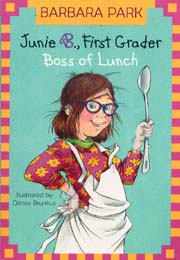
Author: Pam Muñoz Ryan
This blog will serve as a way to communicate my responses to different children's literature I will be reading throughout the semester.





I chose to read this particular anthology because it is about sports. Poetry is probably one of my least favorite genres, but if I can find a subject I enjoy, then it is not so bad. This was a great collection of poems. They are written at a very simple level that children can understand, as well as imitate. They are short and give a great description of an event during a game or match. It encompasses a wide variety of sports. I can see this book working well with boys because they can be very passionate about sports, and this can get them involved with poetry as well. The poem I chose to share is about basketball, my favorite sport. It makes me think of my brother when he was little. He would always tell us he was going to grow and be able to dunk a ball. He is now eighteen, and he is an outstanding ball player; he can also dunk the ball. The picture that goes with the poem is a little boy with a ball trying to dunk, and there are several pictures of him getting larger and larger as he reaches the goal. All the pictures are done with watercolor and ink, and the colors are bright and bold. They grab the attention of the reader. The white space all around draws attention to the bold black text, and the great illustrations. Certain elements of poetry are present even in these simple short poems. I think the first element that stands out is the rhyme. In this poem, not every line rhymes. It goes in a pattern of abcb dede. The same letters represent a rhyme, so the second and fourth lines in the first stanza rhyme (rim, him). In the second stanza, the first and third rhyme, and so do the second and fourth (spectacular/taller, all/basketball). According to Temple text, rhyming adds a musical quality to poetry, and it builds repetition. If I was teaching children about poetry, I would probably start with simple rhyming poems because they are easier to grasp. The end rhymes in the poem help pull a reader in, and they become more involved. The imagery produced by some of the words in this poem is really incredible. For example, the young ball player says, “I’ll soar above the rim…fly so high…” these give the reader a great illustration of someone jumping really high because being able to dunk a basketball means you can get yourself up to the ten-foot rim. Another word I love in this poem is “spectacular” describing the dunk. This makes me think of Michael Jordan and other great athletes who could leap and do great tricks when dunking the ball. There is a very simple form to this poem, two stanzas of four lines each. This helps with understanding, and logic of the poem. There are commas or an ending punctuation at almost every line, so students can easily break it down. The insight given by this poem is obvious, as it is stated at the end. The ball player must “grow three feet taller” in order to dunk the basketball. I think readers will enjoy this ending because they can relate to it, especially if they are short. This entire anthology is a must for my classroom because I think that every student can find a poem in here that inspires them to get up and move around.


The Mirror of Erised shows you what your heart most desires. I know that if I was to walk up and look inside, it would show me my family. I am very close to all of them, and they are the most important thing in the world to me. My parents and younger sister are moving to Hernando, Mississippi, right outside of Memphis, TN this summer because my Dad recently earned a promotion. My younger brother will be graduating from high school and going to play basketball in college. He has not made a decision as to where yet, but none of his top choices are anywhere near Boone. I think that my heart's greatest desire would be to have them closer to me. I feel very safe and lucky knowing that I can see them in an hour. After this summer, it will be a 12 hour drive to see my parents. Besides this, I desire to one day have a family of my own. I hope that my future family will be able to be as strong and supportive as the family I am a part of right now.